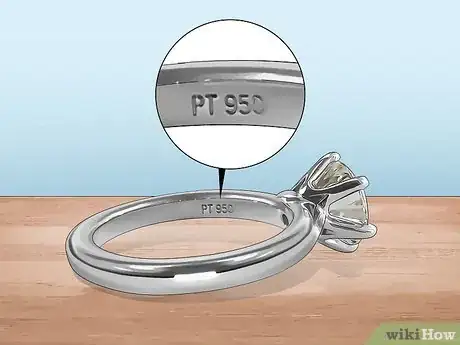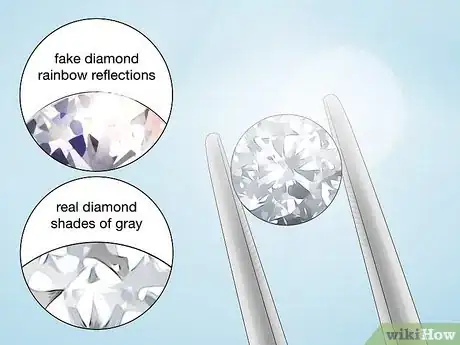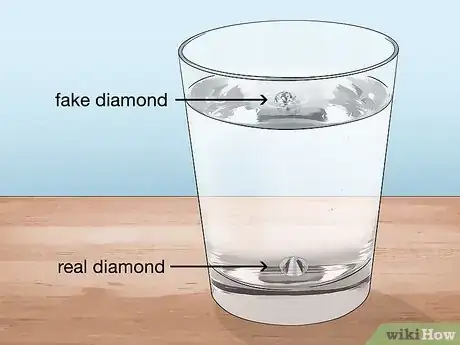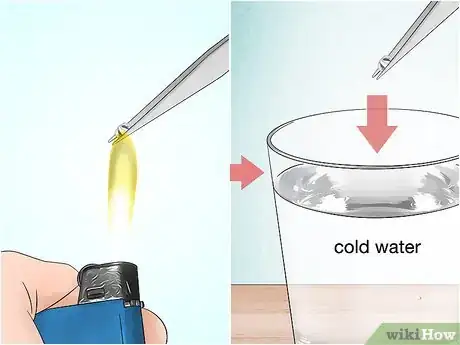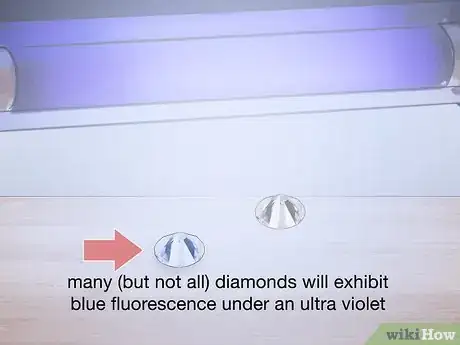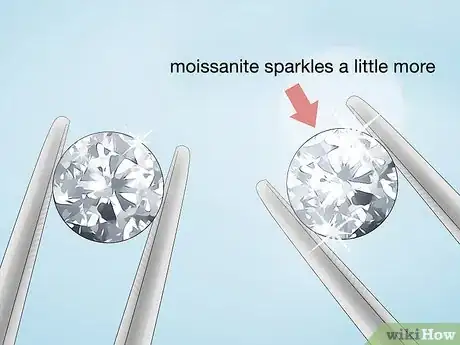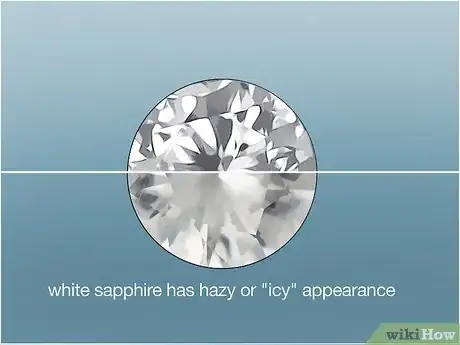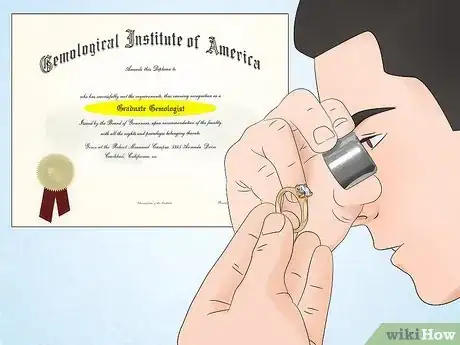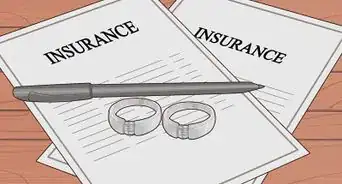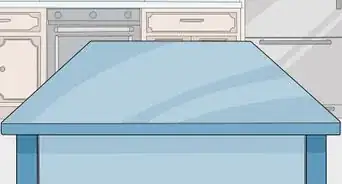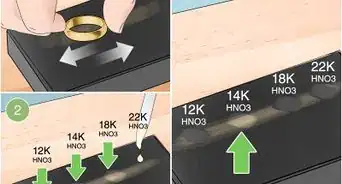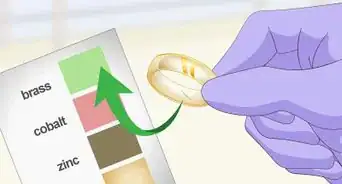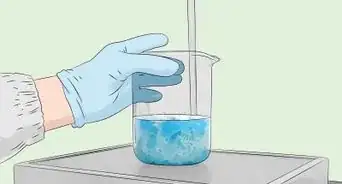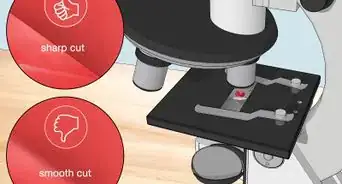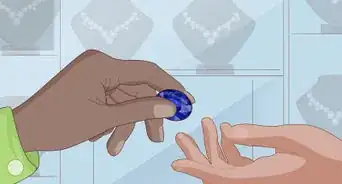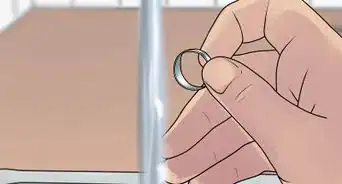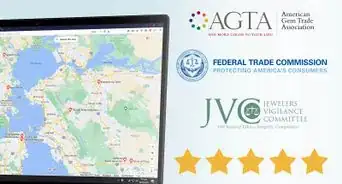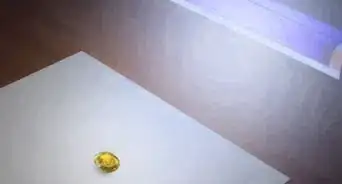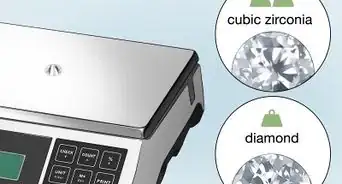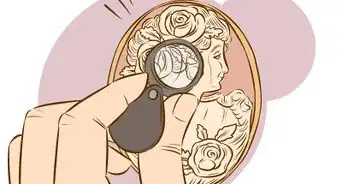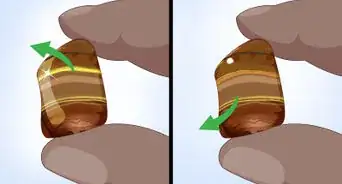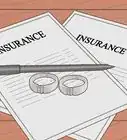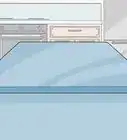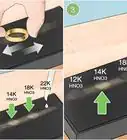This article was co-authored by Cory Schifter. Cory Schifter is a Jeweler, Certified Jewelry Appraiser, and the Owner of Casale Jewelers in Dongan Hills, Staten Island, New York. Casale Jewelers is known for its selection of fine jewelry, designer brands, engagement rings, certified diamonds, custom-made jewelry, and watches. Cory has over 10 years in the jewelry industry and is a certified jewelry appraiser. Cory was featured on NY1 News “Got it Made in New York” for Casale Jewelers’ custom design business and Casale Jewelers was recognized by American Express and Facebook in 2012 as one of the top five small businesses in the nation.
There are 12 references cited in this article, which can be found at the bottom of the page.
wikiHow marks an article as reader-approved once it receives enough positive feedback. This article received 82 testimonials and 85% of readers who voted found it helpful, earning it our reader-approved status.
This article has been viewed 7,115,716 times.
Finding out whether or not your diamond is real is a tantalizing proposition — do you want to know without a doubt? Most curious citizens turn to a professional jeweler in order to suss it out. But you don't have to be Sherlock Holmes to tell the real from the duds. A little bit of light, some water or warm breath, and a jeweler's loupe is all you need.
Steps
Testing Mounted Diamonds
-
1Use the fog test. Put the stone in front of your mouth and fog it like you would a mirror. If it stays fogged for a couple seconds, it’s probably a fake — a real diamond disperses the heat from your breath instantaneously and won't fog up easily. Even if you wait in between fogging it up and looking at it, it will still clear much faster than a fake.
- It can help to use a stone you know is real next to the suspect stone and fog both. You can watch how the real one stays clear while the fake one fogs over; if you breathe on fake diamonds repeatedly, you will see condensation start to build up. With each puff, the fake stone will fog up more and more, while the real one will still be clean and clear.
-
2Check the setting and mount. A real diamond is not likely to be set in a cheap metal. Stamps inside the setting indicating real gold or platinum (10K, 14K, 18K, 585, 750, 900, 950, PT, Plat) are a good sign, while a "C.Z." stamp will give away that the center stone is not a real diamond.[1] C.Z. stands for Cubic Zirconia, which is a kind of synthetic diamond.Advertisement
-
3Use a jeweler's loupe to inspect the diamond. You can usually borrow one from the jewelry store. Mined diamonds usually have small naturally occurring imperfections, which are called "inclusions," that can be seen with a loupe. Look for small flecks of minerals, or very slight color changes. These are both signs that you're dealing with a real, albeit imperfect, diamond.
- Cubic zirconium (which should pass all of the other tests) usually doesn't have imperfections. That's because they are grown in sterile environments instead of produced by chance in the Earth's laboratory. A gem that is too perfect is more often than not a fake.
- It is possible, however, that a real diamond will be flawless. Don't use imperfections as the determining factor in whether your diamond is real or not. Rule out fakes using other tests first.
- Note that lab-grown diamonds will also normally have no imperfections because they are also produced in carefully controlled environments. Gem-quality diamonds grown in a lab can be chemically, physically and optically identical (and sometimes superior) to naturally occurring ones. This ability to surpass the quality of "natural" diamonds has caused considerable concern among those in the mined diamond business who have lobbied heavily to have lab-grown diamonds distinguished from "natural diamonds". Lab-grown diamonds are "real" but they are not "natural".
Testing Unmounted Diamonds
-
1Look at the stone's refractivity. Diamonds sharply bend, or refract, the light that passes through them, resulting in their strikingly brilliant appearance. Stones like glass and quartz sparkle less because they have a lower refractive index. A stone's brilliance is difficult to alter in any way, even with an expert cut, because it's an inherent property of the stone. By taking a close look at the stone's refractivity, you should be able to tell whether it's the real thing or a fake. Here are a few ways to do it:
- The newspaper method: Turn the stone upside down and place it on a piece of newspaper. If you can read print through the stone, or even see distorted black smudges, then it probably isn't a diamond. A diamond would bend the light so sharply that you wouldn't be able to see the print. (There are a few exceptions: if its cut is disproportionate, the print can still be visible through a real diamond.)
- The dot test: Draw a small dot with a pen on a piece of white paper and place the stone over the center of the dot. Look directly down on it. If your stone is not a diamond, you will see a circular reflection in the stone. You won't be able to see the dot through a real diamond.
-
2Observe the reflections. A real diamond's reflections usually show up in various shades of gray. Look straight down through the top of the diamond. If you see rainbow reflections, you're either dealing with a low-quality diamond or a fake.[2]
- Instead, check for "sparkles." A real diamond will sparkle significantly more than an equivalently-size piece of glass or quartz. You may want to take along a piece of glass or quartz as reference.
- Don't confuse sparkle with reflection. Sparkle has to do with the brilliance or intensity of the light that's refracted by the cut of the gem. Reflection has to do with the color of the light that's refracted. So look for intense light, not colored light.
- There is a stone that has even more luster than a diamond: moissanite. This gemstone is so similar to diamond that even jewelers have a hard time telling them apart. To tell the difference without special equipment, hold the stone close to your eye. Shine a penlight through the stone. If you see rainbow colors, that's a sign of double refraction. This is a property of moissanite, but not of diamond.
-
3Drop the stone in a glass of water and see if it sinks to the bottom. Due to its high density, a real diamond will sink. A fake one will float at the top of the surface or in the middle of the glass.
-
4Heat up the stone and see if it shatters. Heat up a suspect stone with a lighter for 30 seconds, then drop it straight into a glass of cold water. The rapid expansion and contraction will overwhelm the tensile strength of weaker materials like glass or quartz, causing the stone to shatter from the inside. Real diamond is strong enough that nothing will happen.
Testing Professionally
-
1Ask for a heat probe test. The tight, evenly-packed crystalline structure of diamonds makes them disperse heat quickly; thus, real diamonds will not heat up easily. Heat probe tests take about 30 seconds and are often done free of charge. It also doesn't hurt the stone the way some other ways of testing will.
- Heat testing works for the same reasons that the DIY "shatter" test works. Instead of measuring whether the gem breaks under the pressure of rapid contraction, however, heat probes measure how long the diamond retains temperature.
- If you want to have your diamond professionally tested, look online to find a reputable jeweler in your area.[3]
-
2Request combination diamond/moissanite testing. Many jewelers keep specialized devices that distinguish diamond from moissanite and can quickly indicate if a stone is a true diamond or a simulant.
- A traditional heat probe test will not be able to tell the difference between moissanite and a real diamond. Ensure that the test is being conducted with an electrical conductivity tester and not a thermal tester.
- If you are testing a lot of diamonds at home, combination testers can be purchased online or at diamond specialty shops.
-
3Get a microscopic examination. Place the diamond under a microscope with the top facet dace down. Gently rock the diamond back and forth with tweezers. If you see a slight orange flash along the facets, the diamond may actually be Cubic Zirconia. It may also indicate that Cubic Zirconia was used to fill imperfections within the diamond.
- To get the best view of the diamond use a 1200x power microscope.
-
4Subject the diamond to high sensitivity weighing. Diamonds can be distinguished by very fine differences in weight, since cubic zirconia weighs approximately 55% more than diamonds for the same shape and size.[4] A very sensitive scale capable of measuring down to the carat or grain level is necessary to do this comparison.
- The only way to accurately perform this test is by having a known real diamond of roughly the same size and shape. Without something to compare it against, you will have difficulty determining if the the weight is off.
-
5Inspect the diamond under ultraviolet (UV) light. Many (but not all) diamonds will exhibit blue fluorescence under an ultra violet or black light, so the presence of a medium to strong blue confirms that it is real. The absence of blue, however, does not mean a stone is necessarily fake; some diamonds do not fluoresce under UV light.[5] Very slight green, yellow, or gray fluorescence under ultraviolet light may indicate that the stone is moissanite.[6]
- Though a UV test can help you narrow down your choice of possibilities, if possible, try to avoid relying on the results of this test as definitive indicators of whether or not a diamond is real. As noted above, some diamonds fluoresce under UV light and others do not. It's also possible for fake diamonds to be "doped" — treated so that they glow under UV light when they otherwise would not.[7]
-
6Get an x-ray examination. Diamonds have a radiolucent molecular structure, which means that they don't appear in x-ray images. Glass, cubic zirconium and crystals all have slightly radiopaque qualities that make them show up clearly on an x-ray.
- If you want to get your diamond x-ray tested, you will either need to submit it to a professional diamond testing lab, or make a deal with your local x-ray imaging center.
Telling Natural Diamonds from Other Stones
-
1Recognize synthetic diamonds. Lab-created or synthetic diamonds are "real" but they are not "natural". Synthetic diamonds cost a fraction of what a mined diamond costs, but they are (usually) chemically the same as "natural" diamonds. Telling the difference between a natural and a synthetic diamond requires a trained professional using highly sophisticated equipment which tends to rely on detecting the higher uniformity (closer to perfect) structure that gem-quality lab-created diamonds usually have as well as distinctive trace quantities and uniform distribution of specific non-carbon elements within the diamond crystal. Man-made diamonds do not command the same re-sale value as mined diamonds due to successful PR campaigns by the mined diamond industry to suggest that mined diamonds are better than lab-made diamonds because they were mined instead of "made". If you care about re-sale and insurance values it is important to know if the gem is "natural" or "man-made".
-
2Recognize moissanite. Diamond and moissanite are very easy to mistake for each other. It is difficult to tell the difference between them but moissanite sparkles a little more than diamond and also produces a double refraction, which can be difficult for most people to see. You can try shining a light through a stone, and if it gives off a much more colorful and large shine than a known diamond, then you'll know that moissanite is what you have.[8]
- Diamond and moissanite have very similar thermal conductivities. If you only use a diamond tester, it will show "diamond" when you actually have moissanite. It is important to test any stone that tests "diamond" on a diamond tester or a moissanite tester. For a professional jeweler, the best option is to just get a combined diamond/moissanite tester.
-
3Recognize white topaz. White topaz is another stone that can look a little like a diamond to the untrained eye. However, white topaz is much softer than diamond. A mineral's hardness is determined by its ability to scratch and be scratched by other materials. A stone that can scratch others easily without being scratched itself is hard (and vice versa for soft stones). Real diamonds are some of the hardest minerals on the planet, so look for scratches around the facets of your stone. If your stone appears to be somewhat "scratched up", it's probably a white topaz or another soft substitute.
-
4Recognize white sapphire. Contrary to popular belief, sapphires aren't only blue. In fact, these gems are available in virtually every color. White varieties of sapphire, which appear clear, are often used as diamond substitutes. However, these stones don't contain the sharp, sparkling contrast between light and dark areas that real diamonds do. If you find that your stone has a somewhat hazy or "icy" appearance — that is, its light and dark areas don't contrast greatly — it's probably a white sapphire.[9]
-
5Recognize cubic zirconia. Cubic zirconia is a synthetic stone which closely resembles a diamond. The easiest way to spot a cubic zirconia is by the color of its "fire" or shine. Cubic zirconia gives off an orange shine which makes this stone easy to identify. Its artificial origin can also give it much more "clear" appearance than natural diamonds, which often contain minor flecks and flaws.
- Cubic zirconia are also known to exhibit a greater spectrum of color than real diamonds when light is focused on the stone. A real diamond's sparkle and reflection should be largely colorless, while a cubic zirconia can project colored sparkles.[10]
- One commonly-circulated test for determining whether a stone is a real diamond is to scratch glass with it. According to popular belief, if the stone scratches glass without becoming scratched itself, it's a real diamond. However, some high-quality cubic zirconia can also scratch glass, so this test is actually not a definitive way to determine whether a diamond is real or not.[11]
Proving a Diamond is Real
-
1Find a reputable diamond appraiser in your area. Most diamond retailers hire their own gemologists and appraisers, but many consumers find it more desirable to request third party appraisal from an independent gemologist who specializes in the appraisal of diamonds. If you're going to invest in a stone, or are curious about a stone you already own, you'll want to be sure that the stone you've got is appraised accurately.
- An appraisal involves two basic steps: first identifying and evaluating the stone in question, and then assigning value. When looking at independent appraisers, it would be ideal to select an appraiser with a Graduate Gemologist (GG) degree issued by a Gemological Institute in your country, who isn't involved directly in the sale of diamonds.[12] This way, you can be sure that the science is sound.
- When you take your diamond to someone for appraisal, be sure it's someone who's trusted in your community. However, it's also a good idea to choose a jeweler who will appraise the stone in front of you, rather than taking it out of your site.[13]
-
2Ask the right questions. Aside from finding out whether or not the stone is fake, a good appraiser can answer a variety of questions about the quality of your stone to make sure that you're not getting ripped off. This is especially important if you've already purchased or inherited a stone. The gemologist should be able to tell you:
- whether or not the stone is man-made or natural (Note: man-made diamonds are diamonds, just not "natural". See the section on detecting man-made diamonds for more detail.)
- whether or not the stone has been color-altered
- whether the stone has had permanent or temporary treatment added
- whether a stone matches the grading documentation provided by a retailer
-
3Request a certificate of appraisal. Whatever tests you choose to have performed, the best and most reliable way to tell if a diamond is real is to check the paperwork and speak to the gemologist or the appraiser. Certification and grading assures you that your stone has been "proven" real by experts. Proof is especially important if you're buying a stone sight-unseen, like from the Internet. Ask for a certificate.
- The best way to check the authenticity of your diamond is to have it certified by an organization like the Gemological Institute of America, or GIA. If there's a location near you, you can take your diamond to them directly, or you can have it removed from the setting by a professional jeweler, then ship it to the GIA.[14]
-
4Look at your certificate carefully — not all certificates are created equal. The certificate should be from a grading authority (e.g. GIA, AGSL, LGP, PGGL) or an independent appraiser who is affiliated with a professional organization (like the American Society of Appraisers) but not with any one retailer.
- Certificates come with lots of information about your diamond, such as carat weight, measurements, proportions, clarity grade, color grade, and cut grade.
- Certificates may also come with information that you might not expect a jeweler to give you. They include:
- Fluorescence, or the tendency of the diamond to give off faint glow when exposed to ultraviolet light.[15]
- Polish, or the smoothness of the surface.
- Symmetry, or the degree to which the opposing facets mirror each other flawlessly.
-
5Get your stone registered. Once you know for sure that your diamond is real, whether through independent appraisal or grading lab, take your stone to a lab that can register and fingerprint your diamond. This will ensure you that you have your real stone, and that no one will be able to switch it out without your knowing.
- Just like humans, every diamond is unique. New technology is allowing gemologists to quantify that uniqueness by producing a "fingerprint" of your gem. Registration usually costs less than $100, and can assist in insurance purposes. If a stolen diamond of yours with a fingerprint shows up in an international database, you should be able to retrieve it by showing documentation that proves it is yours.[16]
Expert Q&A
-
QuestionHow can I check the authenticity of a black diamond before I buy it?
 Cory SchifterCory Schifter is a Jeweler, Certified Jewelry Appraiser, and the Owner of Casale Jewelers in Dongan Hills, Staten Island, New York. Casale Jewelers is known for its selection of fine jewelry, designer brands, engagement rings, certified diamonds, custom-made jewelry, and watches. Cory has over 10 years in the jewelry industry and is a certified jewelry appraiser. Cory was featured on NY1 News “Got it Made in New York” for Casale Jewelers’ custom design business and Casale Jewelers was recognized by American Express and Facebook in 2012 as one of the top five small businesses in the nation.
Cory SchifterCory Schifter is a Jeweler, Certified Jewelry Appraiser, and the Owner of Casale Jewelers in Dongan Hills, Staten Island, New York. Casale Jewelers is known for its selection of fine jewelry, designer brands, engagement rings, certified diamonds, custom-made jewelry, and watches. Cory has over 10 years in the jewelry industry and is a certified jewelry appraiser. Cory was featured on NY1 News “Got it Made in New York” for Casale Jewelers’ custom design business and Casale Jewelers was recognized by American Express and Facebook in 2012 as one of the top five small businesses in the nation.
Jeweler & Certified Jewelry Appraiser Take it to a local jeweler in your area. They will have a tool that can be used to check diamonds.
Take it to a local jeweler in your area. They will have a tool that can be used to check diamonds. -
QuestionHow to test if a diamond is real?
 Cory SchifterCory Schifter is a Jeweler, Certified Jewelry Appraiser, and the Owner of Casale Jewelers in Dongan Hills, Staten Island, New York. Casale Jewelers is known for its selection of fine jewelry, designer brands, engagement rings, certified diamonds, custom-made jewelry, and watches. Cory has over 10 years in the jewelry industry and is a certified jewelry appraiser. Cory was featured on NY1 News “Got it Made in New York” for Casale Jewelers’ custom design business and Casale Jewelers was recognized by American Express and Facebook in 2012 as one of the top five small businesses in the nation.
Cory SchifterCory Schifter is a Jeweler, Certified Jewelry Appraiser, and the Owner of Casale Jewelers in Dongan Hills, Staten Island, New York. Casale Jewelers is known for its selection of fine jewelry, designer brands, engagement rings, certified diamonds, custom-made jewelry, and watches. Cory has over 10 years in the jewelry industry and is a certified jewelry appraiser. Cory was featured on NY1 News “Got it Made in New York” for Casale Jewelers’ custom design business and Casale Jewelers was recognized by American Express and Facebook in 2012 as one of the top five small businesses in the nation.
Jeweler & Certified Jewelry Appraiser The best way to be sure is to have it looked at by a reputable jeweler in your area. However, you can also have it appraised by an organization like the Gemological Institute of America, or GIA.
The best way to be sure is to have it looked at by a reputable jeweler in your area. However, you can also have it appraised by an organization like the Gemological Institute of America, or GIA.
Warnings
- There is no way to be 100% sure that a diamond is real unless there is a certificate from a reputable grading authority. If you buy a pawned item, something off a table at a market, or an item off of a website, you are taking a risk.⧼thumbs_response⧽
- Do not test or show off a diamond by scratching something against it. If it's real, you won't scratch it — but you might chip or break it because diamonds are hard but brittle, not tough.[18] Sandpaper can be used to distinguish some fake diamonds from real ones, but this is not a completely reliable test either.[19] If it's not a real diamond it still might pass the scratch test, because many gemstones are very hard — or, if it fails the scratch test, you just needlessly ruined a jewel that looked just like a diamond.⧼thumbs_response⧽
References
- ↑ http://diamondcuttersintl.com/real-thing/
- ↑ http://engagementrings.lovetoknow.com/wiki/Diamond_Grades
- ↑ Cory Schifter. Jeweler & Certified Jewelry Appraiser. Expert Interview. 21 April 2020.
- ↑ http://diamondcuttersintl.com/real-thing/
- ↑ http://diamondcuttersintl.com/real-thing/
- ↑ http://en.wikipedia.org/wiki/Silicon_carbide#Jewelry
- ↑ http://www.diamondreview.com/tutorials/fake-diamond
- ↑ http://www.moissanitejewelry.com/moissanite.htm
- ↑ http://jewelrywiseblog.com/best-substitutes-for-diamond/
- ↑ http://www.eglasia.com.hk/diamond-identification.html
- ↑ http://www.diamondreview.com/tutorials/fake-diamond
- ↑ http://www.pricescope.com/wiki/diamond_appraisers_why_you_need_one_and_what_expect
- ↑ Cory Schifter. Jeweler & Certified Jewelry Appraiser. Expert Interview. 21 April 2020.
- ↑ Cory Schifter. Jeweler & Certified Jewelry Appraiser. Expert Interview. 21 April 2020.
- ↑ http://www.adiamondbuyingguide.com/diamond-fluorescence.html
- ↑ http://7online.com/archive/9048573/
- ↑ http://diamondcuttersintl.com/real-thing/
- ↑ http://en.wikipedia.org/wiki/Toughness
- ↑ http://diamondcuttersintl.com/real-thing/
About This Article
To quickly tell if your diamond is real, breathe on it to make it fog up. If the fog disperses right away, it’s a real diamond; if it stays fogged for a few seconds, it’s probably fake. If the diamond isn’t mounted on jewelry, set it on a piece of paper with writing. If the print is completely illegible, it’s real; if you can can read the print or make out some smudged lines, it’s fake. You can also check by dropping the stone in a glass of water. A diamond is very dense and will sink, while a fake one will float. To learn more about how to tell diamond apart from other stones, such as cubic zirconia or white topaz, keep reading!

